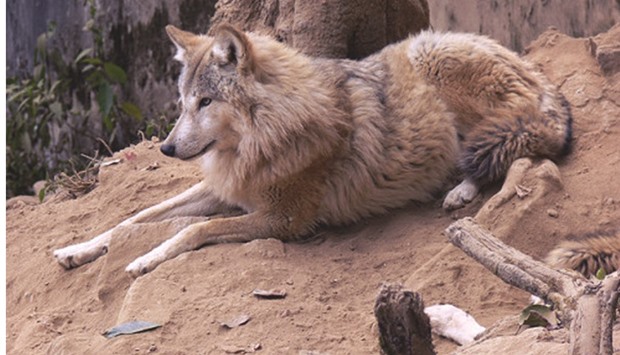Although the current distribution of the critically endangered Himalayan wolf has mostly been a matter of assumption, rather than evident truth, an international research team has now confirmed its existence in Nepal’s largest protected area - the Annapurna Conservation Area.
Recent genetic studies have revealed the existence of three lineages of wolves in the Indian subcontinent.
Of these, the Himalayan wolf, Canis lupus chanco, has been reported to be the most ancient lineage historically distributed within the Nepal Himalaya.
When compared to the European wolf, this one stands out with its smaller size, unusually longer muzzle and stumpy legs. Another clearly distinctive feature is the white colouration around the throat, chest, belly and inner part of the limbs.
On the other hand, its characteristic woolly body fur has given the sub-species the
common name ‘woolly wolf’.
Now an international research team, led by Madhu Chetri, graduate student at the Hedmark University of Applied Sciences, Norway, conducted DNA analysis of fecal samples suspected to have originated from wolves. The samples were collected from the Annapurna Conservation Area of Nepal.
Analysis revealed that four of the six samples collected were aligned within the monophyletic and ancient Himalayan wolf clade.
Their findings are published in the journal ZooKeys.
The distinctiveness of the Himalayan wolf is far more than skin deep, the researchers stressed.
The authors noted that recent studies have already revealed that these wolves have split as a separate branch within the ‘tree of life’ so long ago that they are divergent from the whole globally distributed wolf-dog clade.
Having undergone such an isolated evolution, the Himalayan wolf is considered of particular conservation concern.
However, the populations are still suffering heavy mortality. As a part of their research, the authors conducted both formal and informal interviews with about four hundred local herders, livestock owners, nomads and village elite to find out more about the status of the human-wolf conflict, as well as their
attitudes and perceptions.
As a result, they found that the wolves are considered a threat to local livelihoods. They were persecuted and killed.
“These genetically distinct Himalayan wolves deserve special conservation attention, at the same time that the conservation of this species in a context of human-wildlife conflict is challenging,” the scientists concluded.

The Himalayan wolf, Canis lupus chanco, has been reported to be the most ancient lineage historically distributed within the Nepal Himalaya.


